CONTROLS:
CARACTERÍSTICAS:
● Su cuerpo está hecho de una sola y fuerte pieza de grafito,
la cual es liviana y resistente a la corrosión
● 1 cojinete de bolas de acero inoxidable
● Un arrastre con cojinete de bolas de titanio. . . suave y
duradero
● Tiene hasta el 200 % más de superficie de arrastre que el
antiguo diseño de carretes de arrastre de estrella
● El pie del carrete es de acero inoxidable
● Los engranajes del piñón y del eje principal son de acero
inoxidable
● Los engranajes principales son de acero inoxidable
● Tiene una alarma con un chasquido fuertemente audible
cuando un pez muerde el anzuelo
SPECIFICATIONS
FEATURES:
● Strong, one-piece graphite body that is lightweight and
resists corrosion
● 1 stainless steel ball bearing
● Exclusive ball bearing titanium drag... smooth and durable
● Up to 200% more drag surface area than older design star
drag reels
● Stainless steel reel foot
● Stainless steel pinion gear and main shaft
● Stainless steel drive gear
● Loud click strike alarm
TR SERIES SPECIFICATIONS:
ITEM GEAR WEIGHT LINE CAPACITY
No. RATIO
oz.(g) lb-yds.
TR-100G 4.3 : 1 12.5 (354) 12-390, 14-330, 17-250
TR-200G 4.3 : 1 13.2 (374) 14-480, 17-400, 20-300
HOW A STAR DRAG OPERATES
HOW A STAR DRAG OPERATES
Operating your star drag is very easy. To increase the drag
pressure rotate the star clockwise, counterclockwise to
decrease it. The proper drag adjustment is based on line
strength. The basic formula is to begin fishing with the drag
at approximately one-third of the line test. For example, if you
are using 20 lb. test, the strike drag should be no more than
7 lbs. Using 30 lb. test, it should be no more than 10 lbs.
LE FONCTIONNEMENT DU FREIN DE TYPE STAR
L'opération du frein est très facile. Pour augmenter la
pression du frein, tourner le régleur du frein dans le sens des
aiguilles d'une horloge. Pour diminuer la pression du frein,
tourner le régleur du frein dans le sens contraire des aiguilles
d'une horloge. Le bon ajustement du frein est basé sur la
force de la corde. La formule principale est de commencer à
pêcher avec le frein ajusté à approximativement un tiers de la
force de votre corde. Par exemple, si vous vous servez de la
corde de 20 lbs. de résistance, la pression du frein ne devrait
pas surpasser 7 lbs. En se servant de la corde de 30 lbs. de
résistance, la pression du frein ne devrait pas surpasser 10
lbs.
CÓMO FUNCIONA UN CARRETE DE ESTRELLA
El carrete de estrella es muy fácil de operar. Para aumentar
la presión de arrastre, haga girar la estrella en el sentido de
las agujas del reloj y en el sentido contrario para disminuirla.
El ajuste de arrastre adecuado está basado en la fuerza de la
línea. La fórmula básica consiste en empezar a pescar con
aproximadamente un tercio de la línea de prueba. Por
ejemplo, si está usando una línea de prueba de 20 lbs., la
posición de arrastre “STRIKE” debería ser ajustada a no más
de 7 lbs. Si usa una línea de 30 lbs., no debería estar
ajustada a más de 10 lbs.
SCALING DRAG TENSION
SCALING DRAG TENSION
If you are an experienced angler you may be able to set your
drag tension by pulling line from the reel by hand while it is in
"strike" and judging it through feel. If you have any doubts,
scale your drag. Many anglers overestimate their drags by
100%.
To scale your drag, first place the reel on the rod and run the
line through the guides. Next, have a friend hold the scale
and pull the line so that it puts a bend in the rod.
Using this method you can be assured your drag is set
accurately.
L'AJUSTEMENT DU FREIN SUR UNE BALANCE
Si vous êtes un pêcheur d'expérience, vous pouvez
probablement ajuster le frein en tirant la corde du moulinet
avec votre main pendant qu'il est en position "STRIKE" et en
jugeant par expérience. Si vous avez des doutes, servez vous
d'une balance à poisson pour ajuster votre frein. Beaucoup de
pêcheurs surestiment le frein de 100%.
Pour ajuster le frein avec une balance, placez le moulinet sur
la canne et passez la corde à travers les anneaux de la
canne. Attachez votre corde à la balance et demandez à un
copain de tenir la balance et de tirer sur la corde pour qu'elle
fasse un arc sur la canne. En utilisant cette méthode, vous
vous assurez que votre frein sera ajusté précisément.
CÓMO CALIBRAR LA TENSIÓN DE ARRASTRE
Si usted es un experimentado pescador, usted podría ajustar
la tensión de arrastre jalando la línea a mano mientras el
carrete está en la posición “STRIKE” y sintiendo su tensión. Si
tiene dudas, calibre su arrastre. Muchos pescadores
sobreestiman el arrastre hasta en un 100 %.
Para calibrar el arrastre, coloque el carrete en la caña de
pescar y pase la línea a través de las guías. Después, haga
que un amigo agarre la balanza y jale de la línea hasta que la
caña de pescar se doble. Al usar este método, usted puede
estar seguro de que el arrastre estará ajustado con
precisión.
FILLING THE SPOOL
ENVOLVIENDO EL CARRETE
Su carrete puede ser utilizado con casi cualquier tipo de línea,
incluyendo las de monofilamento, Dacron o las líneas
trenzadas. No importa que tipo de línea elija, usted debería
saber que ésta tiene que ser firmemente envuelta en el
carrete. Esto se logra cargando la línea con una tensión firme
y uniforme. Si la línea no fue envuelta apretadamente, un pez
que esté en la línea y nadando contra un ajuste de arrastre
fuerte, jalará las primeras vueltas de la línea hasta las capas
inferiores. Esta porción incrustada de línea puede trabar al
carrete o dañar la misma línea. Cualquiera de las dos
situaciones probablemente causará que el pez se escape
debido a la ruptura de la línea o al sobregiro del carrete.
Asegure la línea alrededor del eje del carrete. Si no hace
esto, la línea podría deslizarse fuera del carrete cuando sea
sometida a presión. Muchos carretes tienen una muescas
rojas en la parte lateral del carrete para indicar el nivel
óptimo de envoltura de la línea. Si no las tienen, envuelva el
carrete hasta un cuarto o media pulgada debajo del borde del
carrete.
Nota especial:
Cuando utilice una línea muy liviana, o líneas trenzadas, le
recomendamos que envuelva el carrete con un resguardo de
Dacron antes de envolver la línea. Esto protegerá al carrete
del proceso conocido como mono compresión que, en casos
extremos, podría causar daños al carrete. Este paso es
necesario solo con líneas muy livianas.
FILLING THE SPOOL
Your reel can be used with almost any type of line including
monofilament, Dacron, or braided. Whichever line you
choose, you should be aware that it must be filled firmly onto
the spool. This is accomplished by loading the line under firm
and uniform tension. If the line is not wound tightly onto the
spool, a fish running off line against a strong drag setting will
pull the top-most coil of line down into the lower layers. This
embedded line can either lock the spool or damage the line
itself. Either situation will probably cause a lost fish through
broken line or overrun spool.
Securely anchor you line around the arbor of the spool.
Failure to do so may allow the line to slip around the spool
under pressure. Many reels have engraved red lines on the
spool flange to indicate the optimal line fill level. If not, fill the
spool to one quarter to one half inch from the spool edge.
Special note:
When using very light line, or braided lines, we recommend
wrapping a "cushion" of Dacron onto the spool before winding
in the line. This will protect the spool from mono compaction,
which can, in extreme cases, cause spool damage. This step
is only necessary with very light line.
SHIMANO SALTWATER DRAGS
SHIMANO SALTWATER DRAGS
Our quality control standard is 100 miles of drag being pulled
before noticeable deterioration in performance. So, you need
not worry about rebuilding your drag, probably forever. All
Shimano saltwater conventional reels have drags that are
either sealed from water, or are built of materials whose
performance is unaffected by water.
FREINS POUR MOULINETS A EAU SALEE SHIMANO
Notre standard de contrôle de qualité est de tirer 100 milles
de frein avant qu'il y aie une évidente détérioration de
fonctionnement. Alors, vous n'aurez jamais d'inquiétude
concernant la reconstruction de votre système de frein. Tous
les moulinets Shimano à eau salée conventionnel possèdent
des systèmes de freinage complètement à l'épreuve de l'eau
ou construits avec des matériaux non-affectés par l'eau.
ARRASTRES DE SHIMANO PARA AGUA SALADA
Nuestra norma de control de calidad es establecida por un
arrastre de 100 millas antes de notar un deterioro
perceptible en su rendimiento. Entonces, usted nunca más
tendrá que preocuparse por reconstruir su arrastre.
Todos los carretes Shimano para agua salada tienen
arrastres que son herméticos o que están hechos de
materiales cuyo rendimiento no es afectado por el agua.
REMPLISSAGE DE LA BOBINE
Votre moulinet peut être utilisé avec presque n'importe quelle
sorte de corde tel que monofilament, Dacron ou tressé. Quel
que soit le choix de corde, assurez-vous que le remplissage se
fasse avec une bonne tension sur la corde pour que celle-ci
s'embobine sur la bobine de la bonne façon. Ceci s'effectue en
embobinant la corde sous une tension ferme et uniforme. Si
la corde n'est pas enroulée correctement sur la bobine, un
poisson se débattant contre un ajustement de frein à haute
pression pourra faire en sorte que la corde se coince. La
corde ainsi coincée peut barrer la bobine ou endommager la
corde-même. Quelle que soit la situation, le pêcheur perdra le
poisson à cause d'un bris ou d'une "perruque" dans la corde.
Il est important d'attacher votre corde avec soin à l'entour de
la bobine pour bien l'immobiliser. La négligence de ce dernier
pourrait faire glisser la corde autour de la bobine sous
pression. Plusieurs moulinets possèdent des lignes rouges
engravées sur le bourrelet de la bobine pour indiquer le
niveau optimal de remplissage de corde. Si cela n'existe pas,
remplir la bobine jusqu'à 1/4 à 1/2 pouce du rebord de la
bobine.
Important:
En se servant de la corde à très faible résistance ou des
cordes tressées, nous vous recommandons d'enrouler une
bande de ligne Dacron sur la bobine avant d'embobiner la
corde sur la bobine. Ceci protégera la bobine de l'expansion et
de la contraction du monofilament qui pourra en cas extrême,
endommager la bobine. Cette étape est seulement nécessaire
avec de la corde de très faible résistance.


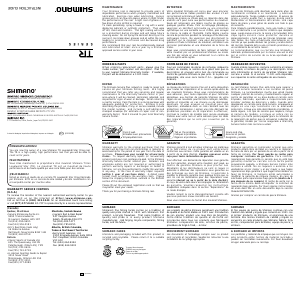

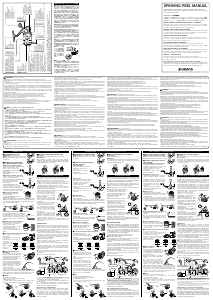
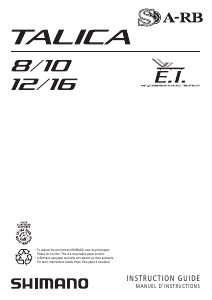
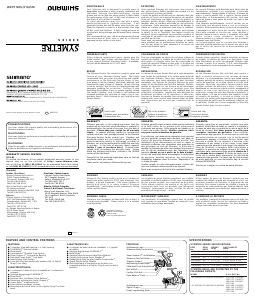
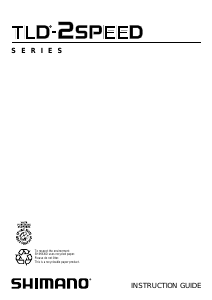
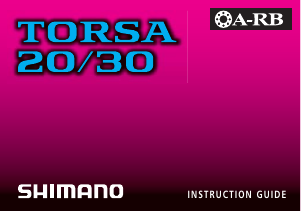
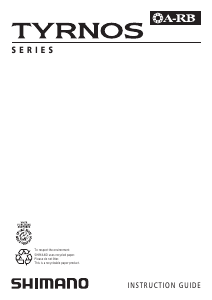
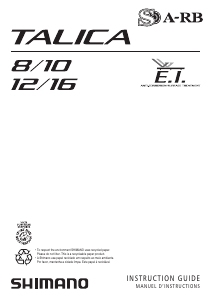
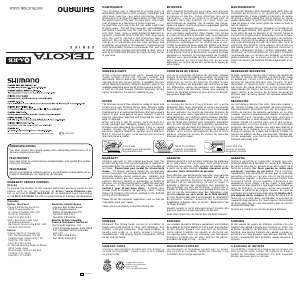
Join the conversation about this product
Here you can share what you think about the Shimano TR 200G Fishing Reel. If you have a question, first carefully read the manual. Requesting a manual can be done by using our contact form.
reply | This was helpful (2)
reply | This was helpful (1)
reply | This was helpful (0) (Translated by Google)